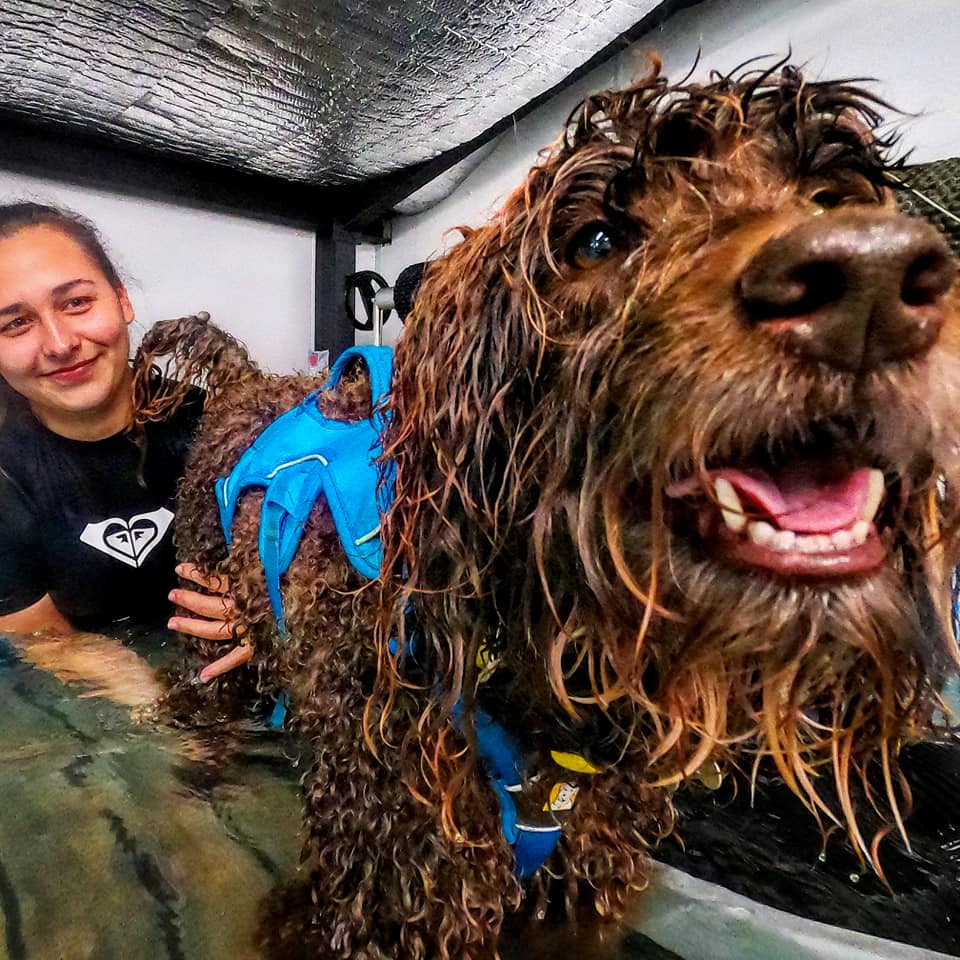The Gold Standard in Physiotherapy and Hydrotherapy for dogs
The Gold Standard in Physiotherapy and Hydrotherapy for dogs

Like people, the limbs of dogs are meant to be relatively straight. The mechanism by which puppies limbs develop and grow is very complex. Occasionally these processes go wrong and deformities result.
There are zones at the ends of the bones in immature animals that are responsible for increasing bone length in a symmetrical manner. These are called the growth plates.
Limb deformities may either be present at birth or become apparent during growth. There are a number of possible causes of limb deformities, the two most common being a genetic disorder and injury.
Many dogs with mild growth deformities can be managed non-surgically. The deformity may be primarily cosmetic rather than causing pain and lameness.
In general, the smaller and more sedentary the patient, the greater should be the consideration for conservative management. In adult animals, corrective surgery is elective and thus can be considered at any time if the response to conservative management is unsatisfactory
X-ray (radiography) is the principle method of investigating growth deformities. It enables assessment of the location of the deformity and also the direction and magnitude of the deformity.
Conservative management may necessitate exercise restriction, such as avoidance of agility-type activities or jumping down from heights. This is especially important in immature dogs to reduce the possibility of further growth plate injury.
Overweight animals should be placed on a diet. In dogs with remaining growth potential, the rate of growth should be evaluated and reduced if necessary by limiting food intake and considering changing feeding from a growth to an adult formula diet under veterinary guidance.
The type of surgery will vary according to the age of the dog (since this influences the remaining growth potential), the bone or bones affected, the possibility of joint involvement, and the severity of the deformity.
The most common surgical procedures performed in immature dogs with growth deformities are:
Restriction of exercise following surgery is necessary until there is radiographic evidence of bone healing (usually six to eight weeks). Active and passive physiotherapy techniques are often beneficial.
Rehabilitation is a process which aims to maximise patient mobility and wellbeing, returning them to their usual way of life following illness, injury or surgery. We restore pets to normal function (or as close as is possible), efficiently and safely using a wide variety of physiotherapeutic techniques.
Injury and even surgery can disrupt the body’s equilibrium in all sorts of direct and indirect ways. Even a pet’s own protective responses such as the inflammatory process can overwhelm and inhibit healing so one objective of rehabilitation is to reduce this level of inflammation. During rehabilitation, we also aim to boost the circulatory system, improve muscle function, increase range of motion within joints, and stimulate innate pain-relieving mechanisms.
With a committed and planned rehabilitation programme, pets can recover more quickly, realise better outcomes and avoid much pain and discomfort.
The best rehabilitation programmes consider the whole pet, not just the area of injury; we target and improve multiple systems throughout the body without forgetting the invaluable healing effects of boosting mental wellbeing too. From the wound healing properties of laser treatment, and the muscle strengthening of hydrotherapy, to the circulation boosting effects of massage, we will devise a rehabilitation programme to match a pet’s specific requirements.
Our friendly and skilled physiotherapists are ready to help you and your dog with their rehabilitation.
The content on this page is for advice and information only and does not represent veterinary guidance or direction. Please always consult a veterinary surgeon if you are worries about your dog.